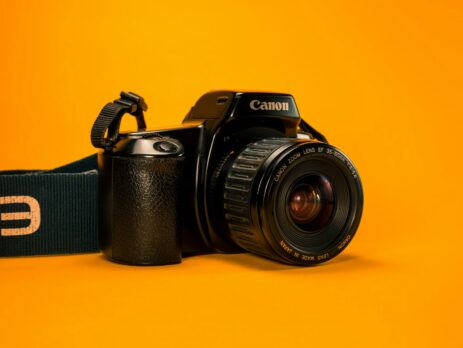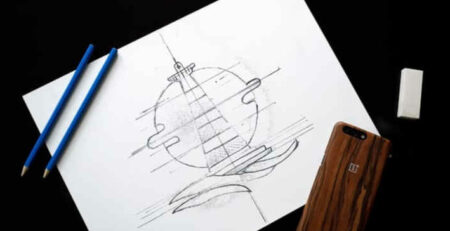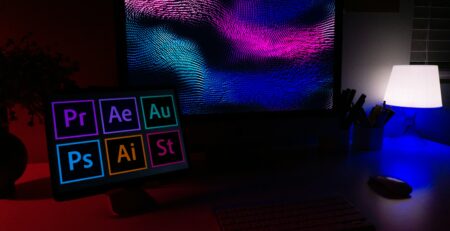Elevate Your E-commerce: Hiring Tips for Product Photographers
In the competitive world of e-commerce, the visual presentation of products plays a pivotal role in attracting and retaining customers. High-quality product photography can significantly enhance online visibility and drive sales. As such, hiring skilled product photographers is a critical decision for any e-commerce business aiming to stand out in the digital marketplace. This guide offers comprehensive insights into the process of selecting the right photographer, ensuring that your e-commerce platform showcases your products in the best possible light.
Understanding the importance of product photography starts with recognizing its impact on consumer behavior. Visuals are often the first element that potential customers interact with. A well-composed and visually appealing product image can influence purchasing decisions and increase conversion rates. Therefore, the expertise of a professional product photographer becomes invaluable.
When considering hiring a product photographer, it’s essential to look for individuals who not only have technical skills but also a creative eye. The ability to convey the essence of a product through photography requires a unique blend of creativity and technical prowess. This is where a creative staffing agency can be instrumental in connecting you with professionals who have been vetted for both their artistic sensibility and technical knowledge.
Another crucial factor is the photographer’s experience in e-commerce photography. Different products require different styles of photography. For instance, reflective products like sunglasses need a different approach compared to textiles. An experienced photographer will have a diverse portfolio that demonstrates their capability to handle various product types and photography styles.
Communication is key in any creative process. Ensure that the photographer you choose is open to collaboration and understands your brand’s vision. The ability to translate client requirements into compelling visual content is what sets apart good photographers from great ones. Discussing your brand guidelines, target audience, and marketing goals with potential photographers during the hiring process will help in identifying the right fit for your project.
Budget considerations are also important. Product photography can vary widely in cost, depending on the complexity of the shoot, the reputation of the photographer, and the intended use of the images. It’s important to have a clear budget in mind and discuss this upfront with potential hires. Remember, investing in high-quality photography often yields a high return in terms of enhanced product appeal and increased sales.
Don’t overlook the logistical aspects of product photography. Consider the location of the shoot, the need for studio space, props, and whether you require lifestyle images or plain product shots. These factors not only affect the cost but also the planning and execution of the shoot. A well-organized photographer will help you navigate these logistics smoothly.
Before making your final decision, review the photographer’s references and previous work. Feedback from past clients can provide insights into the photographer’s professionalism and ability to deliver quality work within deadlines. Most professional photographers will be happy to provide testimonials and a portfolio of their work.
Once you have selected a photographer, it’s crucial to have a detailed contract in place. This should outline the scope of work, deliverables, timelines, copyright information, and payment terms. A clear contract will help prevent misunderstandings and ensure a smooth working relationship.
Finally, consider the long-term potential of your relationship with the photographer. E-commerce is dynamic, and having a go-to professional who understands your business can save time and ensure consistency in your product imagery. Building a good relationship with a photographer can lead to more collaborative and tailored results over time.
By following these guidelines and carefully selecting a product photographer, your e-commerce business can achieve higher engagement and sales through compelling visual storytelling. Remember, the goal is to present your products in a way that resonates with and captivates your target audience, ultimately boosting your brand’s online presence.
Most Asked Questions About Hiring Product Photographers for E-commerce
- What qualifications should I look for in a product photographer?
- How do I evaluate a product photographer’s portfolio?
- What are the typical costs associated with hiring a product photographer?
- How can I effectively communicate my brand’s vision to a photographer?
- What are the benefits of hiring a photographer through a creative staffing agency?
- How do I handle copyright issues with product photography?
- What should be included in a contract with a product photographer?

What qualifications should I look for in a product photographer?
When hiring a product photographer, the qualifications you should look for extend beyond basic photography skills. It’s crucial to consider a combination of formal education, practical experience, and a portfolio that reflects a wide range of skills. Ideally, a photographer should have a background in digital photography, knowledge of lighting techniques, and experience in photo editing software. Specialized courses or certifications in commercial photography can also be advantageous.
Experience in product photography, particularly in your industry, is invaluable. Photographers with specific experience in your product type can bring insights and techniques that are tailored to highlight your products’ best features. For example, a photographer who has worked extensively with fashion brands will likely have a different skill set than one who specializes in electronics.
The ability to adapt to different styles and requirements is also essential. Each brand has its unique voice and aesthetic. A skilled photographer should be able to understand and adapt their style to match the brand’s tone. This flexibility can be observed in their portfolio, which should showcase a variety of styles and product types.
Technical skills are a must. A proficient product photographer should have a strong grasp of the latest photography equipment and technology, including cameras, lenses, lighting equipment, and software. This technical knowledge ensures that they can handle different shooting conditions and deliver high-quality images consistently.
Creativity and an eye for detail are what set great photographers apart. Product photography is not just about capturing a clear image of an item; it’s about telling a story that engages potential customers. A photographer’s portfolio should demonstrate their ability to create visually appealing compositions that highlight the product while maintaining brand consistency.
Professionalism is key in any business interaction. A professional photographer will be punctual, prepared, and communicative. They should be able to manage deadlines and provide deliverables as agreed. Checking references can help gauge a photographer’s professionalism through past client experiences.
Understanding of marketing and e-commerce trends can greatly enhance the effectiveness of product photography. Photographers who are aware of current trends can produce images that are not only visually appealing but also optimized for online platforms, enhancing user engagement and SEO performance.
Lastly, interpersonal skills are crucial for effective collaboration. A photographer should be able to listen to your needs and translate them into compelling visual content. The ability to provide and receive feedback gracefully can significantly improve the outcome of your project.
In summary, the right qualifications for a product photographer go beyond technical skills and include a mix of experience, creativity, professionalism, and the ability to communicate and collaborate effectively. Ensuring these qualifications will help you find a photographer who can contribute to the success of your e-commerce business.
For more insights on hiring and managing creative talent, consider reading about how to conduct a performance review which can be beneficial in assessing and enhancing your collaboration with photographers.
How do I evaluate a product photographer’s portfolio?
Evaluating a product photographer’s portfolio is a critical step in the hiring process. The portfolio not only showcases the photographer’s technical skills but also provides insight into their creative approach and experience with various products and industries. Here are key aspects to consider when reviewing a portfolio:
Firstly, look for diversity in the portfolio. A good product photographer should have experience with a range of products and photography styles. This diversity demonstrates their ability to adapt to different project requirements and challenges. Whether it’s lifestyle shots, studio shots, or detailed macro photography, a varied portfolio is a good indicator of a photographer’s breadth of skills.
Assess the quality of the images. Pay attention to the clarity, lighting, composition, and color accuracy of the photographs. High-quality images should be free of blurs, have good lighting that enhances the product, and display accurate colors. These elements are crucial for creating appealing images that attract customers.
Consider the creativity and uniqueness of the work. Does the photographer have a signature style that makes their work stand out? Are they able to create engaging compositions that could enhance your product’s appeal? Creative imagery can make your products stand out in a crowded market.
Check for relevance to your specific needs. If you’re selling fashion items, for example, ensure the portfolio includes clothing and accessories. Similarly, if your products require specific handling or creative setups, like reflective surfaces or intricate details, look for similar examples in the photographer’s past work.
Look for technical proficiency. This includes the photographer’s ability to manipulate lighting, their expertise in using different camera settings, and their skill in post-production. These technical details can significantly impact the final quality of the product images.
Review client testimonials and case studies. If the photographer includes client feedback or case studies in their portfolio, it can provide additional insights into their working style and the satisfaction level of their clients. Positive feedback and successful case studies are strong indicators of a photographer’s professionalism and ability to deliver quality work.
Observe the photographer’s attention to detail. Product photography requires a keen eye for detail to ensure that all aspects of the product are accurately and attractively presented. This can include the texture of materials, the true colors of the product, and the overall presentation in the context of the brand.
Consider the photographer’s experience with digital platforms. Since the images are primarily for e-commerce, they should be optimized for online viewing. This includes understanding the best formats, resolutions, and compositions that work well on digital platforms, including mobile devices.
Assess their understanding of branding. The images in the portfolio should not only be attractive but should also align with the brand’s message and values. A photographer who can adapt their style to reinforce a brand’s identity can be a valuable asset to your e-commerce strategy.
Finally, gauge their innovation and ability to evolve with trends. A photographer who keeps up with industry trends and continuously refines their craft can provide you with cutting-edge visual content that keeps your product listings fresh and engaging.
By carefully evaluating a photographer’s portfolio with these criteria, you can gain a comprehensive understanding of their capabilities and suitability for your e-commerce needs. For additional resources on enhancing your team’s effectiveness, consider exploring how to know if your salary is competitive, which can help in negotiating fair compensation for freelance photographers.
What are the typical costs associated with hiring a product photographer?
The costs of hiring a product photographer can vary widely based on several factors including the photographer’s experience, the complexity of the project, and the specific requirements of the shoot. Understanding these factors can help you budget appropriately and make informed decisions when hiring a photographer for your e-commerce needs.
Experience and reputation of the photographer play a significant role in determining the cost. Highly experienced photographers or those with a strong reputation in the industry typically charge higher rates. Their expertise, however, can bring a level of professionalism and quality that can significantly enhance your product images and brand perception.
The scope of the project is another major cost factor. This includes the number of products to be photographed, the variety of shots needed per product, and the complexity of the setups required. A larger scope can lead to higher costs due to the increased time and resources needed to complete the project.
Location and logistics also affect the cost. If the shoot requires a studio rental, specific locations, or special equipment, these will add to the overall cost. Additionally, if the photographer needs to travel to a location, travel expenses may also be factored into the pricing.
The intended use of the images can influence cost as well. Usage rights for broad commercial use, such as for national advertising campaigns, are typically more expensive than rights for limited use, like on a local e-commerce website.
Post-production costs should also be considered. This includes editing, retouching, and formatting the images for different platforms. Extensive post-production work can be time-consuming and may increase the overall cost of the photography services.
It’s also important to consider the potential for additional fees. Some photographers charge extra for rush jobs, additional revisions, or extended usage rights. Make sure to discuss these possibilities upfront to avoid unexpected costs.
Packaging deals or contracts can sometimes reduce costs. If you anticipate ongoing photography needs, negotiating a contract for multiple shoots might be more cost-effective than paying per session.
Always request detailed quotes from several photographers to compare pricing and understand what is included in their rates. This will help you assess the value you are receiving for your investment.
Remember, while cost is an important factor, the cheapest option may not always be the best. Investing in quality photography can lead to higher returns through better customer engagement and increased sales.
For further insights into managing costs in your business operations, consider reading about why your company should outsource social media, which can help in reducing marketing expenses while enhancing effectiveness.
How can I effectively communicate my brand’s vision to a photographer?
Effective communication of your brand’s vision to a photographer is crucial for ensuring that the images accurately reflect your brand identity and appeal to your target audience. Here are several strategies to help you convey your vision effectively:
Start with a clear and detailed brief. The brief should include information about your brand, the objectives of the shoot, the target audience, and specific requirements for the images. Providing a well-structured brief can help the photographer understand your expectations and the purpose behind the project.
Include examples of images that align with your brand’s aesthetic. This can be images from previous campaigns, mood boards, or photos from other brands that capture a similar vibe. Visual references can be very helpful in conveying the style and tone you are aiming for.
Discuss the emotional impact you want the images to have. Whether you want to evoke a sense of luxury, fun, reliability, or innovation, explaining the emotional connection can guide the photographer in choosing the right settings, colors, and compositions.
Be open to collaboration. Photographers bring a wealth of creative ideas and experience that can enhance your project. Encourage them to contribute ideas and share their insights on how best to achieve your goals.
Provide feedback on test shots. If possible, arrange for a few test shots before the main shoot. This allows you to give direct feedback and make adjustments to ensure the final images meet your expectations.
Communicate your marketing strategy. Understanding how the images will be used—on social media, e-commerce platforms, or print ads—can help the photographer tailor their approach to suit these mediums.
Discuss the technical requirements. This includes the image format, resolution, and orientation that best suits your platforms. Clear technical guidelines will ensure the images are optimized for their intended use.
Set clear timelines and deliverables. Ensuring that both parties are aware of the deadlines and expected outputs can help in planning the project efficiently and meeting all milestones.
Keep the lines of communication open throughout the project. Regular check-ins can help address any issues promptly and keep the project on track.
Finally, build a relationship with the photographer. A photographer who understands your brand well can consistently deliver images that resonate with your audience and enhance your brand’s visual identity over time.
By following these steps, you can effectively communicate your brand’s vision to a photographer and ensure that the resulting images powerfully convey your message. For more tips on enhancing your brand’s communication strategies, consider exploring why your company should outsource social media.

What are the benefits of hiring a photographer through a creative staffing agency?
Hiring a photographer through a creative staffing agency offers several benefits that can streamline the recruitment process and enhance the quality of your e-commerce images. Here are key advantages to consider:
Access to a pre-vetted pool of talent. Creative staffing agencies specialize in curating a network of professionals who have been rigorously evaluated for their skills and reliability. This means you can trust the quality of candidates you are presented with, saving you time and resources in the hiring process.
Industry expertise. Staffing agencies that focus on creative roles have a deep understanding of the industry and can provide valuable insights into current trends and standards. This expertise can help you find a photographer whose style and experience perfectly match your needs.
Flexibility in hiring. Whether you need a photographer for a one-time project or on an ongoing basis, creative staffing agencies can accommodate different types of employment arrangements. This flexibility is particularly useful for e-commerce businesses that have varying project needs throughout the year.
Speed and efficiency in hiring. Staffing agencies have processes in place to quickly match your requirements with suitable candidates. This can significantly shorten the hiring timeline, which is crucial when you need to meet project deadlines or launch products promptly.
Risk reduction. Hiring through an agency provides a layer of security, as most agencies offer guarantees and support throughout the assignment. If a photographer does not meet your expectations, the agency typically assists in resolving the issue, including replacing the photographer if necessary.
Administrative support. The agency handles all administrative aspects of hiring, including contracts, payments, and insurance. This can be a significant advantage, especially for smaller businesses or those without dedicated HR departments.
Opportunity for trial runs. Some agencies offer the option to work with a photographer on a trial basis before committing to a long-term arrangement. This can be invaluable in ensuring that the photographer is a good fit for your company’s culture and specific project needs.
Overall, using a creative staffing agency can provide peace of mind and access to top-tier talent, ensuring that your e-commerce visuals are in capable hands. This strategic partnership can be a key component in elevating the quality and effectiveness of your product presentations.
For more insights on leveraging external resources effectively, you might find the article on 10 ways to recognize employees useful, as it explores strategies to maintain high morale and productivity among outsourced and in-house teams.
How do I handle copyright issues with product photography?
Navigating copyright issues is critical when hiring product photographers to ensure that the images produced can be used without legal complications. Here are several steps to effectively manage copyright concerns:
Understand the basics of copyright law as it applies to photography. Generally, the photographer holds the copyright to any image they create, unless otherwise agreed in writing. Knowing this can help you negotiate the necessary rights for your e-commerce needs.
Negotiate the scope of usage rights. Decide if you need exclusive rights, which prevent the photographer from selling the images to others, or non-exclusive rights, which are usually cheaper but allow the photographer to resell the images. Be clear about where and how long the images will be used (e.g., web, print, global, etc.).
Include a copyright transfer or license agreement in the contract. This agreement should specify what rights you are purchasing and any restrictions on the use of the images. It’s often helpful to have a legal professional review or draft this section of the contract.
Discuss copyright with the photographer before the shoot. Clear communication can prevent misunderstandings and ensure that both parties are on the same page regarding the use of the images.
Keep records of all agreements and licenses. This documentation can be vital in resolving any future disputes or copyright claims.
Consider the use of stock photos as an alternative or supplement to hiring a photographer, especially if budget constraints are tight. However, ensure that the stock photos are appropriately licensed for your intended use.
Be cautious with trademarks and branded products in your photos. Avoid using images that could imply endorsement or affiliation without permission.
Regularly review your contracts and copyright agreements as your business and legal landscapes evolve. This ongoing review can help you stay compliant with current laws and practices.
By taking these steps, you can minimize the risk of copyright infringement and use your product images confidently across various platforms. For additional resources on managing legal aspects in business, the article on how to handle layoff anxiety provides insights into navigating challenging business scenarios responsibly.
What should be included in a contract with a product photographer?
Creating a comprehensive contract with a product photographer is essential to ensure clarity and protect both parties. Here are key elements to include in a photography contract:
Identification of parties involved and their roles.
Detailed description of the services to be provided, including the type of photography, number of images, and specific requirements for each shot.
Timeline for the shoot and deadlines for deliverables.
Costs and payment terms, including deposits, final payments, and any potential fees for additional services.
Copyright and usage rights, specifying whether the rights are exclusive or non-exclusive, and the scope of usage.
Provisions for cancellation or postponement, including any fees associated with these changes.
Confidentiality clauses, if applicable, to protect proprietary information.
Indemnification clauses to protect against legal actions from third parties related to the use of the images.
Dispute resolution methods, specifying how conflicts will be handled.
Signatures of both parties, making the document legally binding.
Ensuring these elements are clearly defined in the contract can lead to a smoother working relationship and help avoid potential legal issues. For more detailed guidance on creating effective contracts, consider exploring How to Know When You Need to Use a Staffing Agency, which can provide additional insights into contractual best practices.
Conclusion
In conclusion, hiring the right product photographer is a crucial step in enhancing your e-commerce business’s success. By understanding the qualifications to look for, effectively evaluating portfolios, and being aware of the costs and contractual necessities, you can form a productive partnership with a photographer who enhances your product’s appeal. Additionally, clear communication of your brand’s vision and the strategic use of a creative staffing agency can further ensure that the visual content aligns with your marketing goals.
Remember, the images that represent your products not only influence consumer perceptions but also play a critical role in driving conversions. Therefore, investing in high-quality product photography is an investment in your brand’s future. With the right preparation and knowledge, you can navigate the hiring process effectively, leading to a visually appealing e-commerce platform that attracts and delights customers.
For more resources on enhancing your business strategies and managing creative talent, explore the comprehensive articles available here at icreatives. Here, you can find a wealth of information designed to help you thrive in today’s competitive market.












